Controlled Ovarian Hyperstimulation

Controlled ovarian hyperstimulation is a treatment that can be quite successful for women with at least one patent (not blocked) fallopian tube, appropriate sperm parameters and a desire to keep treatments simple. Benefits include the need for less medication, less monitoring and the opportunity to do treatments in sequential cycles if needed.
For women with irregular cycles, the goal is to regulate her cycle and control day-of ovulation to help time introduction of sperm either via intrauterine insemination (IUI) or timed intercourse.
For women with unexplained infertility, the goal is to stimulate the growth of one to two extra eggs and control day-of ovulation to help timed introduction of sperm either via IUI or timed intercourse.
Intrauterine Insemination (IUI)

Intrauterine insemination (IUI) is a procedure that assists with insemination. During IUI, either your partner provides a semen sample or donor sperm is used. The sperm is then processed to help ensure we have the best sperm available.
The timing of your IUI depends on your follicle growth. When monitoring shows that your ovarian follicles have grown to appropriate size, egg maturation and ovulation will be triggered and the IUI will then be completed one to two days later.
Your doctor will use a small catheter to insert the washed sperm through your cervix into your uterus. Pregnancy testing occurs two weeks later.
In Vitro Fertilization (IVF)

A) What is IVF?
IVF, or in vitro fertilization, is a medical procedure used to assist couples or individuals in conceiving a child when natural conception is challenging or not possible. It involves combining eggs and sperm outside the body in a laboratory setting, allowing fertilization to occur. The resulting embryos are then transferred to the uterus for implantation, potentially leading to pregnancy. IVF is a complex and costly procedure that addresses various infertility factors and may require multiple attempts for success. It offers hope for those facing fertility challenges and allows individuals to preserve their fertility for future use.
B) Am I a candidate for IVF treatment?
Determining whether you are a candidate for IVF treatment requires a comprehensive evaluation by a fertility specialist or reproductive endocrinologist. They will consider various factors, including your medical history, age, overall health, and the specific cause of infertility. Some common reasons that may make you a candidate for IVF include:
- Blocked or damaged fallopian tubes: If your fallopian tubes are blocked or damaged, preventing the natural fertilization of eggs, IVF can bypass this issue.
- Male factor infertility: IVF can be an option when there are issues with sperm quality, count, or motility. In such cases, intracytoplasmic sperm injection (ICSI) may be used to directly inject a sperm into the egg during the IVF process.
- Ovulation disorders: If you have irregular or absent ovulation, IVF can help by stimulating your ovaries to produce multiple eggs for fertilization.
- Endometriosis: IVF may be recommended if you have endometriosis, a condition where the tissue lining the uterus grows outside it, affecting fertility.
- Unexplained infertility: When the cause of infertility cannot be identified, IVF may be suggested as a treatment option.
- Genetic disorders: IVF can be used in conjunction with preimplantation genetic testing (PGT) to screen embryos for genetic disorders before transfer.
It’s crucial to consult with a fertility specialist who can assess your specific situation and provide personalized guidance regarding whether IVF is suitable for you. They will consider your individual circumstances and help you explore all available treatment options.
C) What are the risks involved?
IVF, like any medical procedure, carries certain risks and potential complications. Some of the common risks associated with IVF treatment include:
- Multiple pregnancies: One of the risks of IVF is an increased chance of multiple pregnancies, which can carry higher risks for both the mother and babies, including premature birth, low birth weight, and other complications.
- Ovarian hyperstimulation syndrome (OHSS): The fertility medications used to stimulate the ovaries can occasionally cause OHSS, a condition where the ovaries become swollen and
painful. Severe cases of OHSS are rare but can lead to fluid accumulation in the abdomen, chest, or around the heart, requiring medical intervention.
- Ectopic pregnancy: In some cases, the embryo may implant outside the uterus, usually in the fallopian tubes. This is known as an ectopic pregnancy, which can be a life-threatening condition and requires immediate medical attention.
- Failed fertilization or implantation: Despite the best efforts, fertilization may not occur or embryos may fail to implant in the uterus, resulting in a failed cycle.
- Emotional and psychological impact: The emotional and psychological aspects of IVF can be challenging. The process itself, along with the uncertainty of outcomes and potential setbacks, can lead to stress, anxiety, and depression.
It’s important to discuss these risks with your fertility specialist, as they can provide more detailed information based on your specific situation. They will also guide you on ways to minimize potential risks and maximize the chances of a successful IVF treatment.
D) How does IVF Work?
IVF, or in vitro fertilization, involves several steps that typically include the following:
- Ovarian Stimulation: Fertility medications are administered to stimulate the ovaries to produce multiple mature Regular monitoring through ultrasound scans and hormone tests is conducted to assess follicle growth and hormonal levels.
- Egg Retrieval: Once the follicles are mature, a minor surgical procedure known as egg retrieval is performed. A needle is guided into the ovaries under ultrasound guidance to extract the This procedure is usually done under anaesthesia to minimize discomfort.
- Sperm Collection: On the same day as the egg retrieval, a sperm sample is It can be collected through various methods, including masturbation or surgical sperm retrieval techniques in cases of male infertility.
- Fertilization: The retrieved eggs and sperm are combined in a laboratory dish or a specialized incubator in a process called insemination. Alternatively, if there are severe male factor infertility issues, intracytoplasmic sperm injection (ICSI) may be performed, where a single sperm is injected directly into each mature egg.
- Embryo Culture: After fertilization, the resulting embryos are cultured in a controlled laboratory They are monitored for development and typically grown for a few days.
- Embryo Transfer: One or more embryos are selected for transfer into the uterus. The embryos are carefully transferred into the uterus using a thin catheter inserted through the cervix. This procedure is usually painless and does not require anaesthesia.
- Pregnancy Confirmation: Approximately two weeks after the embryo transfer, a pregnancy test is conducted to determine if the IVF cycle was successful. If the test is positive, further monitoring and prenatal care are initiated to support a healthy pregnancy.
Egg Retrieval
When monitoring shows that your ovarian follicles have grown to appropriate size, final egg maturation is triggered with a human chorionic gonadotropin (hCG) or a leuprolide acetate injection, or sometimes both.
36 hours later, our fertility specialist will perform your egg retrieval. This is an outpatient procedure performed under sedation in the Centre. There is minimal risk associated with this procedure, but you will want to plan to take the day off and arrange for a ride home.
Embryo Transfer
Embryo transfer (ET
) is the last and most important step of IVF. It involves the placement of embryos, in the uterus (womb) of the woman undergoing IVF procedure
. These embryos are formed outside the body in the IVF lab by fusion of the oocytes retrieved from the woman undergoing IVF procedure with her male partner’s sperms.
Embryo transfer involves visualizing the cervix, which is the lowest part of the uterus and placing the embryos under ultrasound guidance into a precise location in the uterus. The best location for placing the embryos is about 1 to 1.5cms from the fundus (topmost part) of the uterus.
ET is a painless procedure. The precise, quick and atraumatic placement of embryos in the uterus plays an important role in the success of the IVF procedure.
Fresh versus Frozen ET
Fresh embryo transfer means transferring the embryos in the same cycle in which the gonadotrophin injections have been given and the oocytes (eggs) have been retrieved from the ovaries. It takes place about four to six days after the oocyte retrieval has been done depending upon whether cleavage stage embryos or blastocyst are being transferred (respectively).
Frozen embryo transfers (FET) do not happen in the same treatment cycle, but at a later date, in the luteal phase of another menstrual cycle. FET can be done in a natural cycle or hormone replacement cycle.
Hormone replacement cycle means giving the woman estrogen supplementation for about two weeks and adding progesterone supplementation to it for four to six days and then transferring the frozen-thawed embryos.


 Controlled ovarian hyperstimulation is a treatment that can be quite successful for women with at least one patent (not blocked) fallopian tube, appropriate sperm parameters and a desire to keep treatments simple. Benefits include the need for less medication, less monitoring and the opportunity to do treatments in sequential cycles if needed.
For women with irregular cycles, the goal is to regulate her cycle and control day-of ovulation to help time introduction of sperm either via intrauterine insemination (IUI) or timed intercourse.
For women with unexplained infertility, the goal is to stimulate the growth of one to two extra eggs and control day-of ovulation to help timed introduction of sperm either via IUI or timed intercourse.
Controlled ovarian hyperstimulation is a treatment that can be quite successful for women with at least one patent (not blocked) fallopian tube, appropriate sperm parameters and a desire to keep treatments simple. Benefits include the need for less medication, less monitoring and the opportunity to do treatments in sequential cycles if needed.
For women with irregular cycles, the goal is to regulate her cycle and control day-of ovulation to help time introduction of sperm either via intrauterine insemination (IUI) or timed intercourse.
For women with unexplained infertility, the goal is to stimulate the growth of one to two extra eggs and control day-of ovulation to help timed introduction of sperm either via IUI or timed intercourse.
 Intrauterine insemination (IUI) is a procedure that assists with insemination. During IUI, either your partner provides a semen sample or donor sperm is used. The sperm is then processed to help ensure we have the best sperm available.
The timing of your IUI depends on your follicle growth. When monitoring shows that your ovarian follicles have grown to appropriate size, egg maturation and ovulation will be triggered and the IUI will then be completed one to two days later.
Your doctor will use a small catheter to insert the washed sperm through your cervix into your uterus. Pregnancy testing occurs two weeks later.
Intrauterine insemination (IUI) is a procedure that assists with insemination. During IUI, either your partner provides a semen sample or donor sperm is used. The sperm is then processed to help ensure we have the best sperm available.
The timing of your IUI depends on your follicle growth. When monitoring shows that your ovarian follicles have grown to appropriate size, egg maturation and ovulation will be triggered and the IUI will then be completed one to two days later.
Your doctor will use a small catheter to insert the washed sperm through your cervix into your uterus. Pregnancy testing occurs two weeks later.


